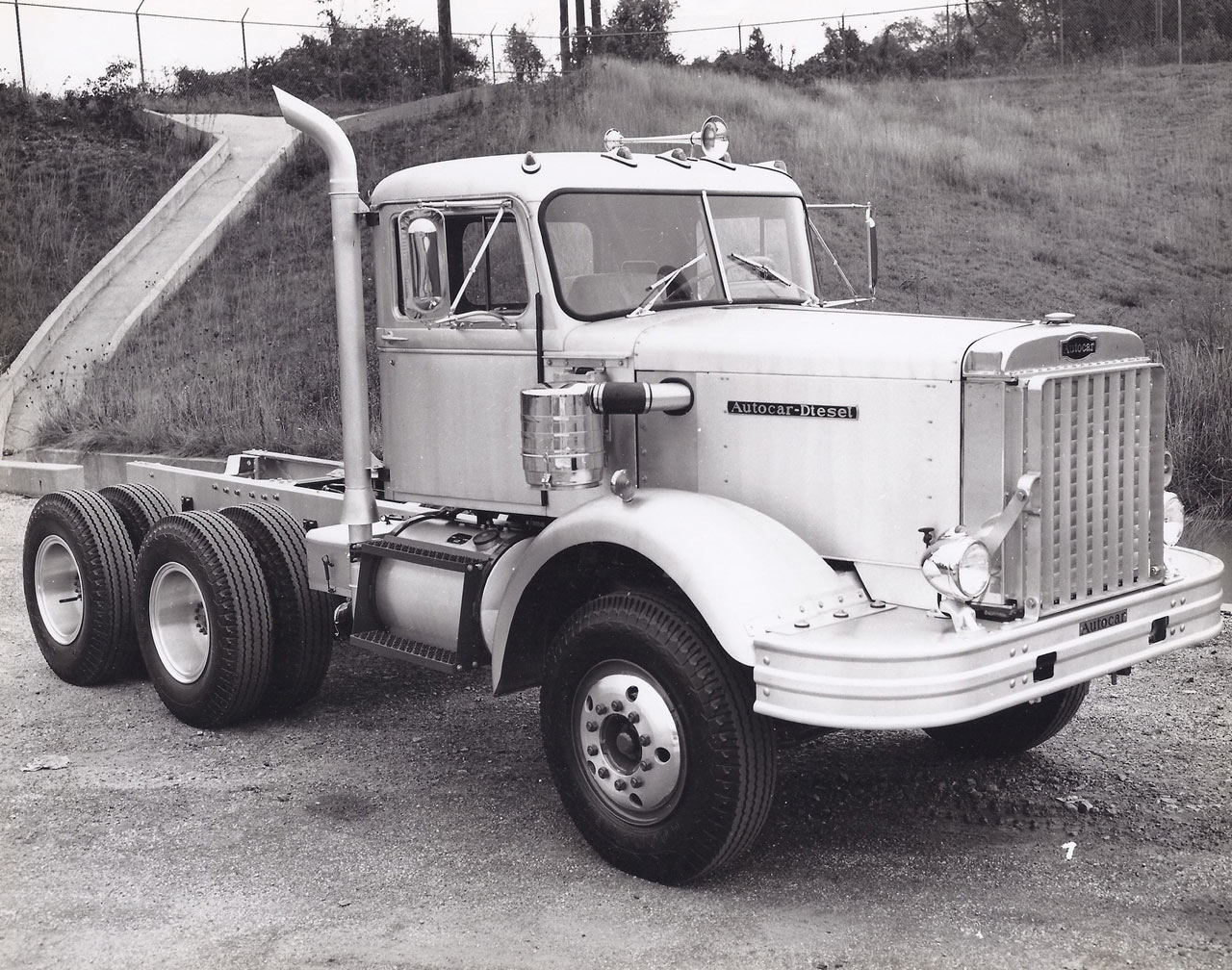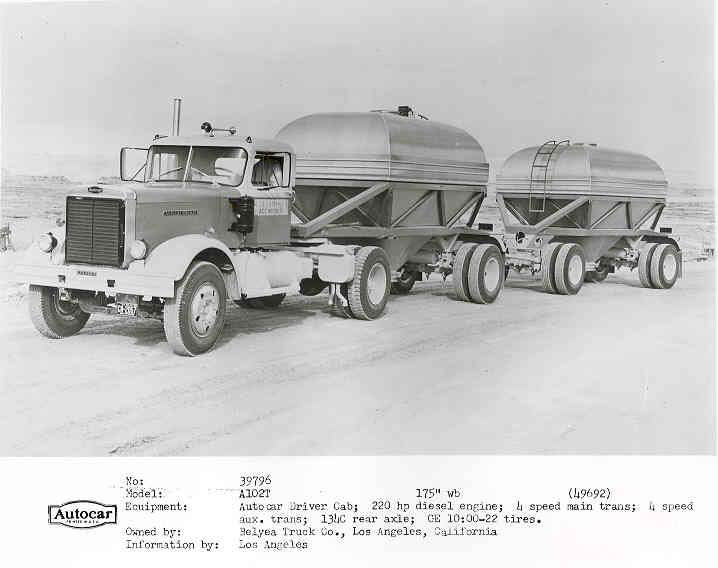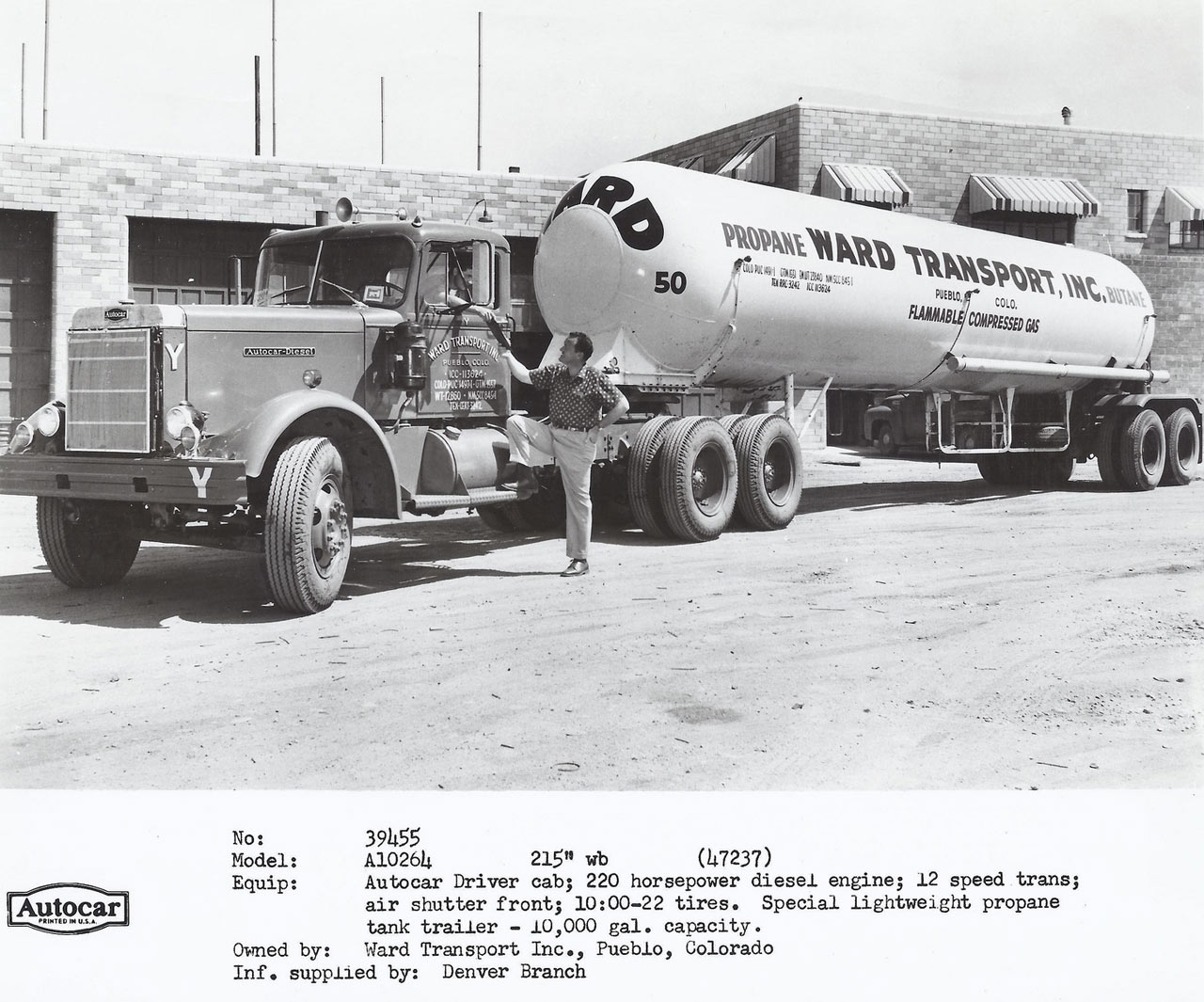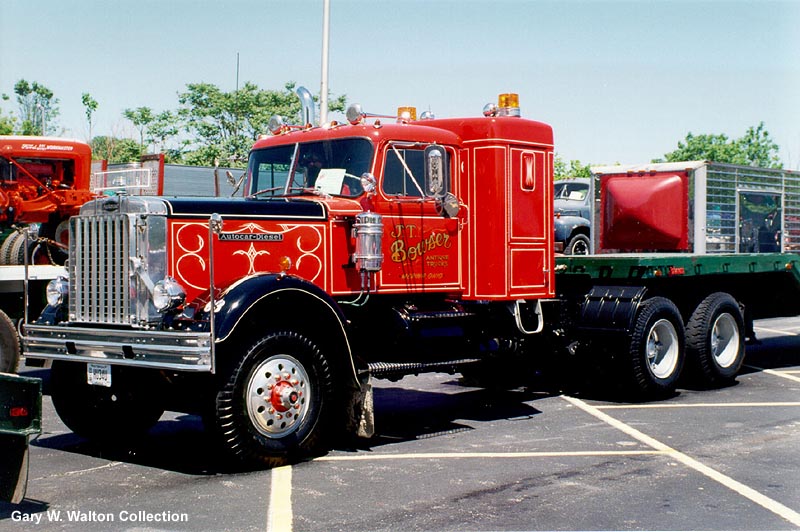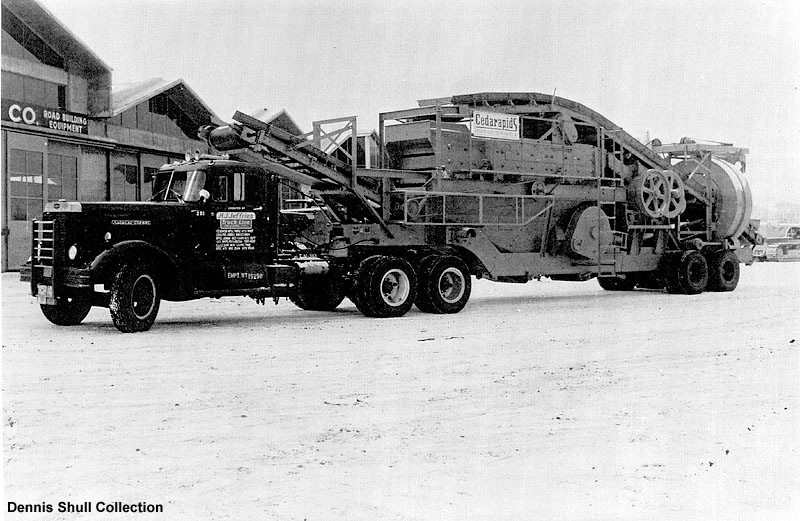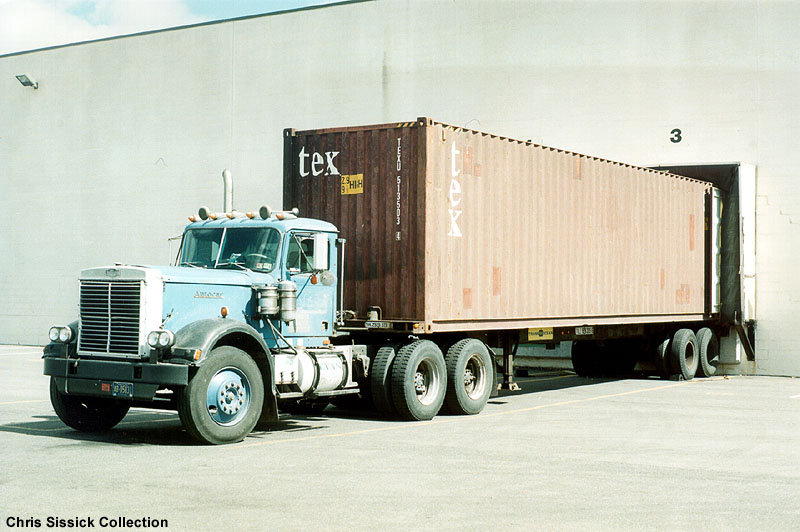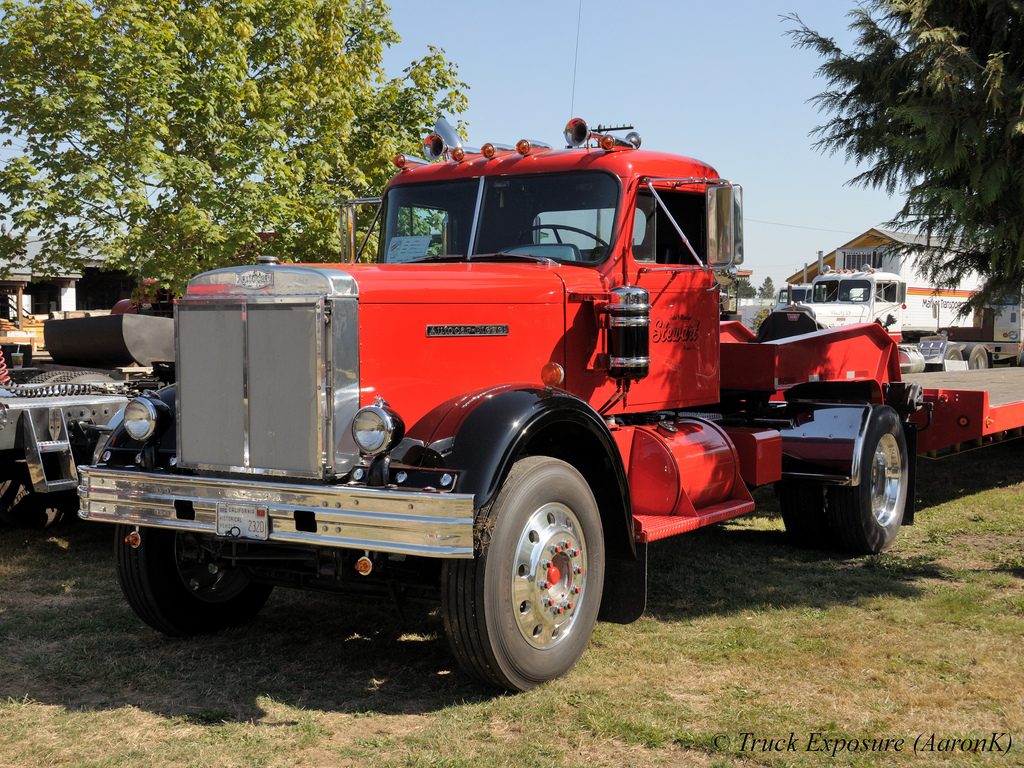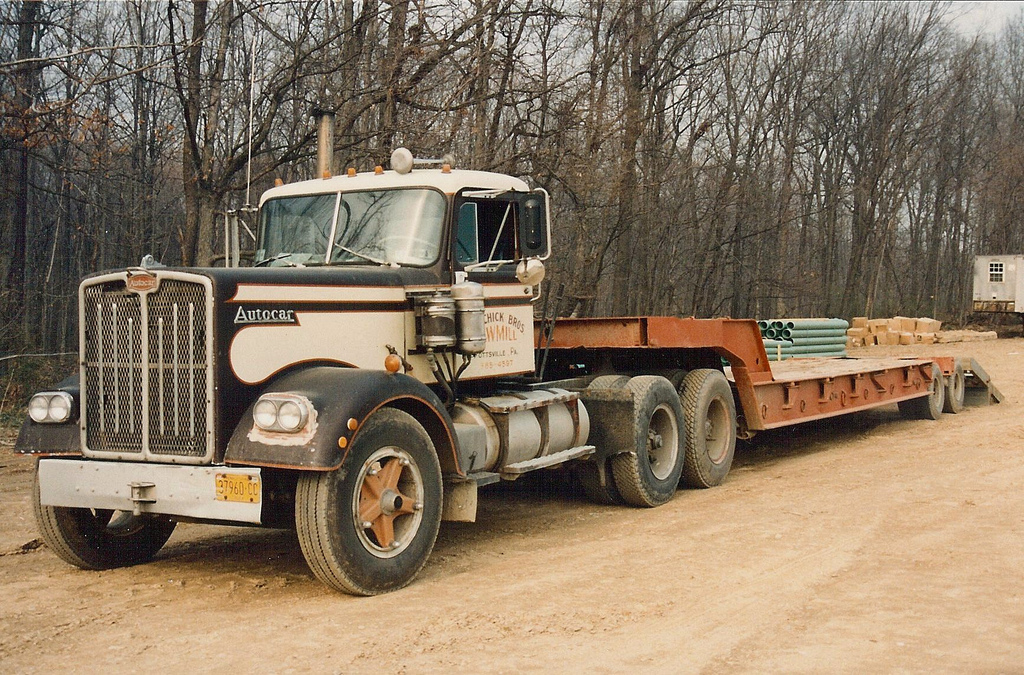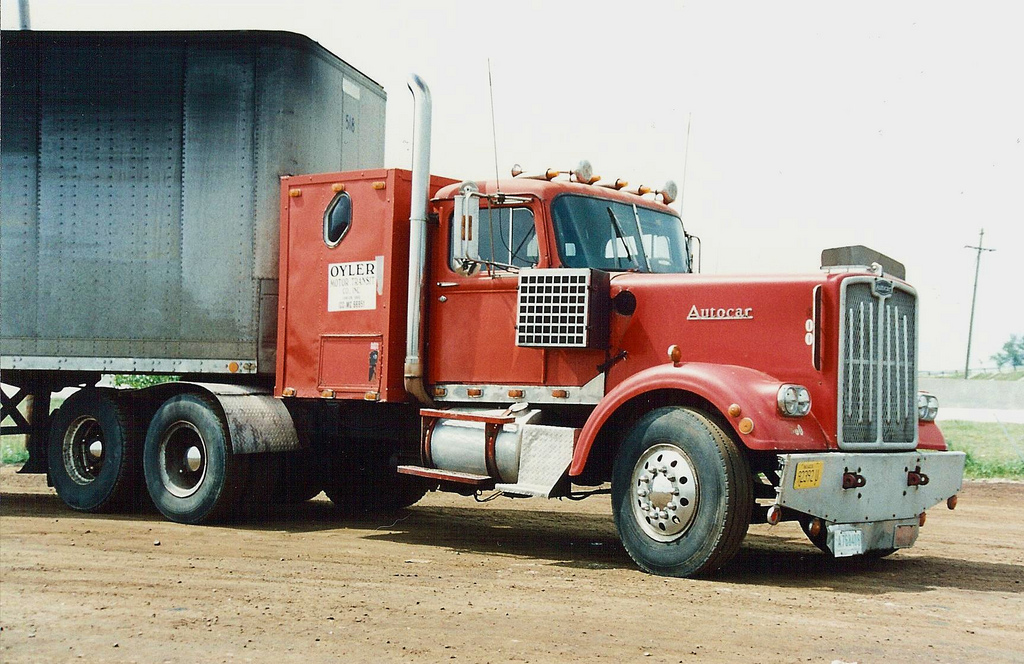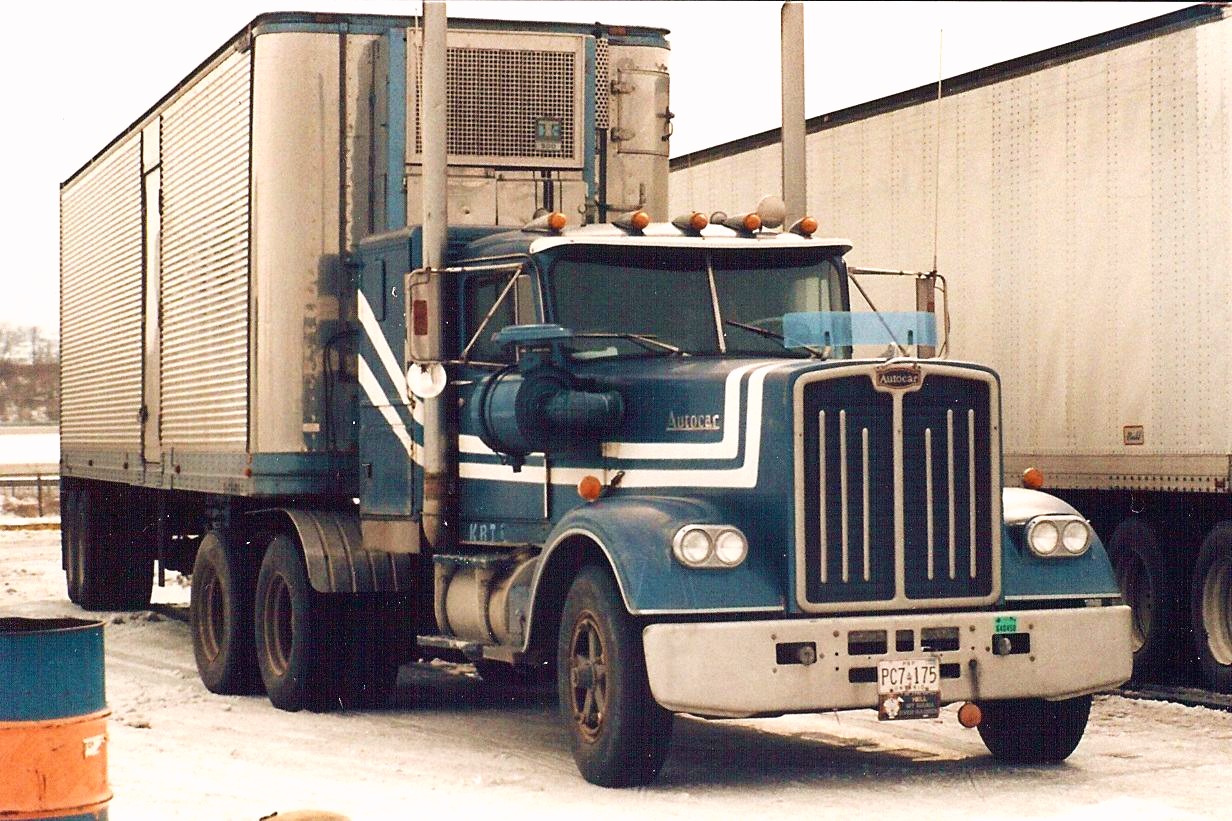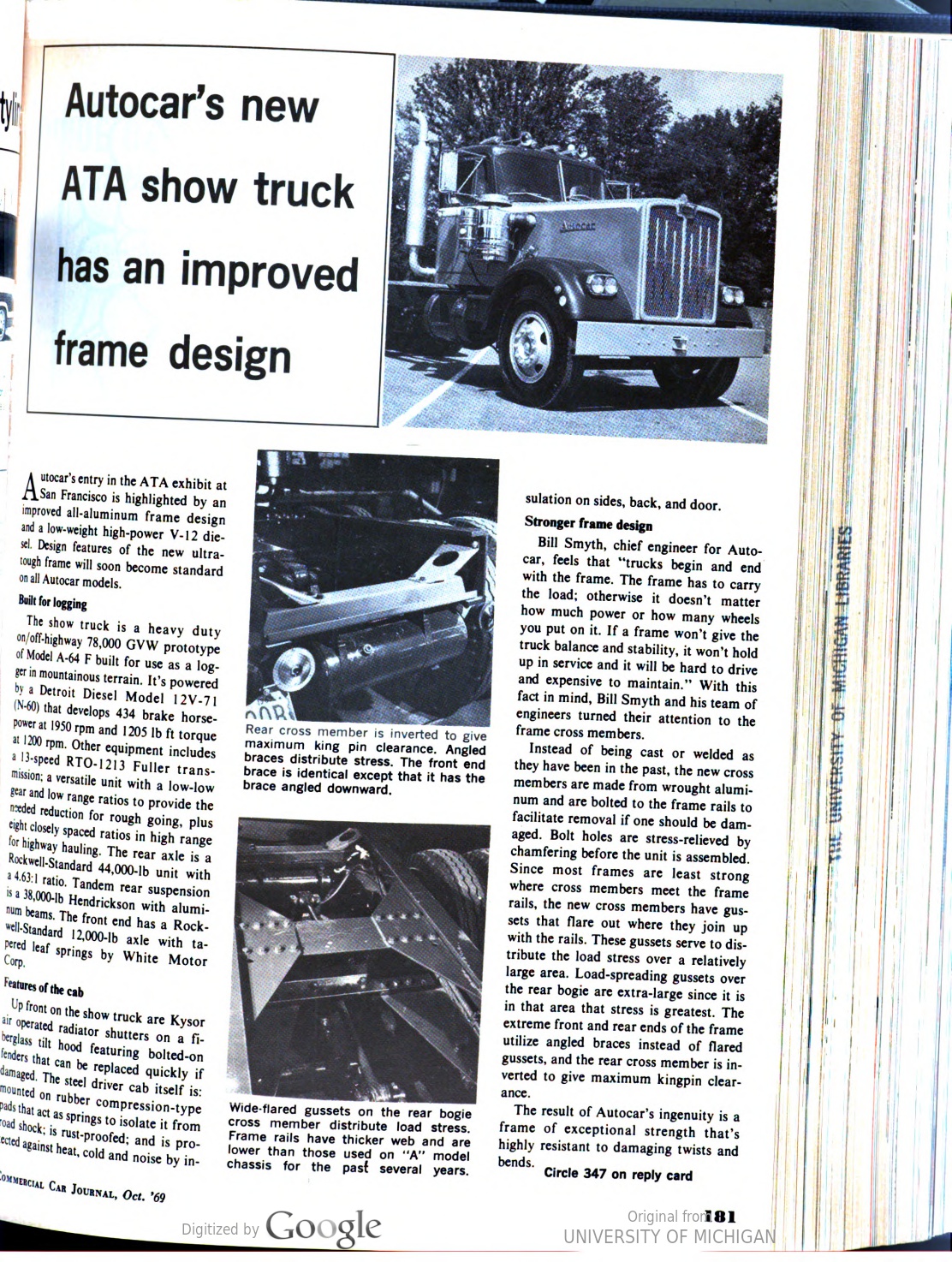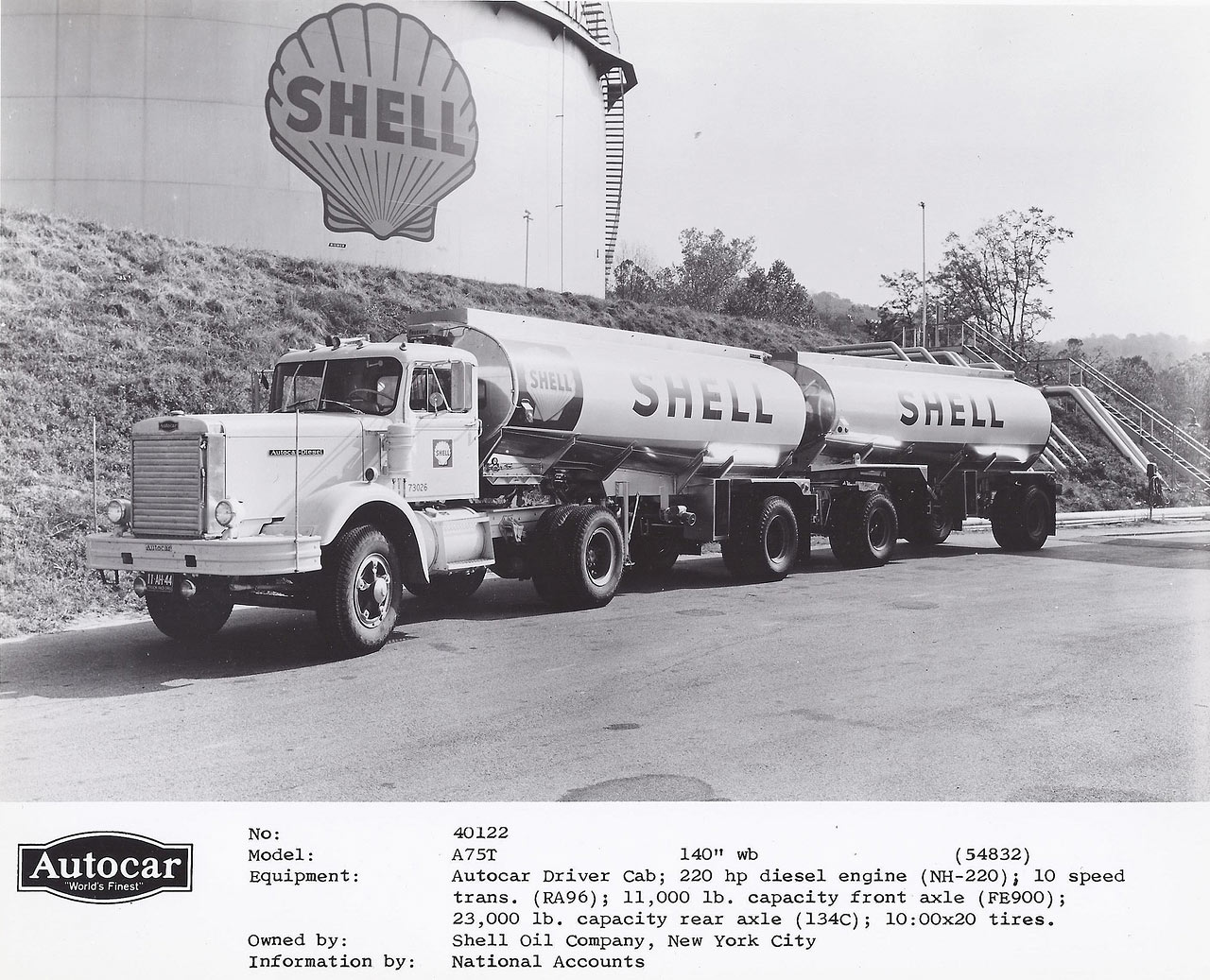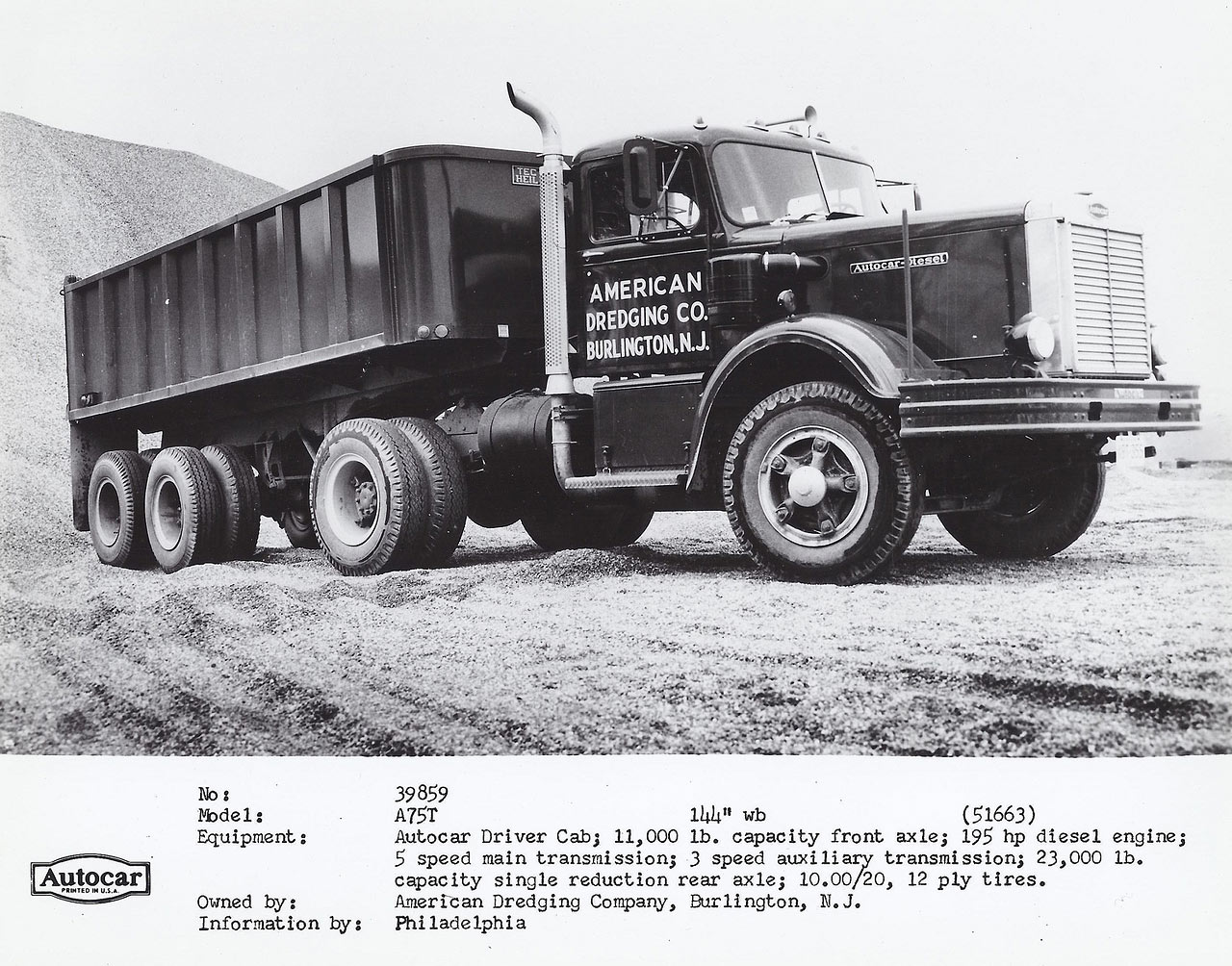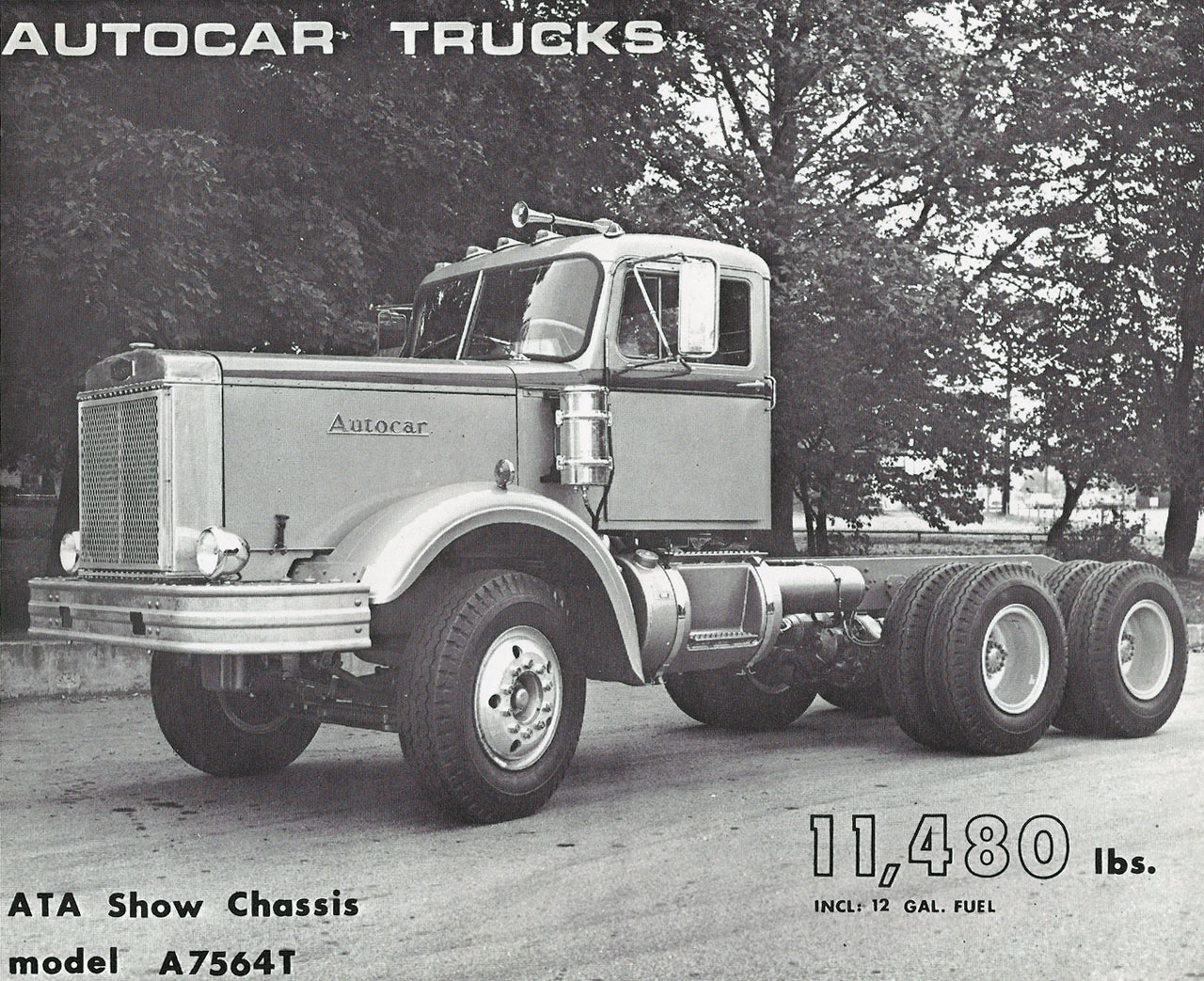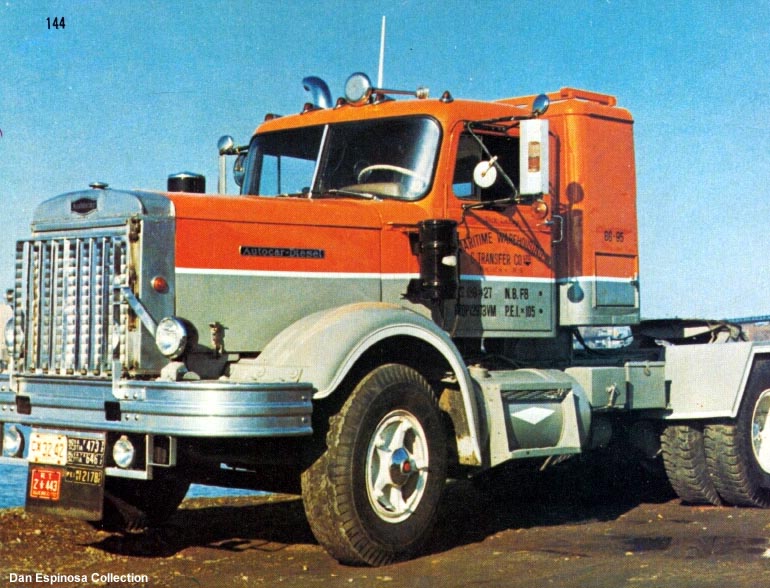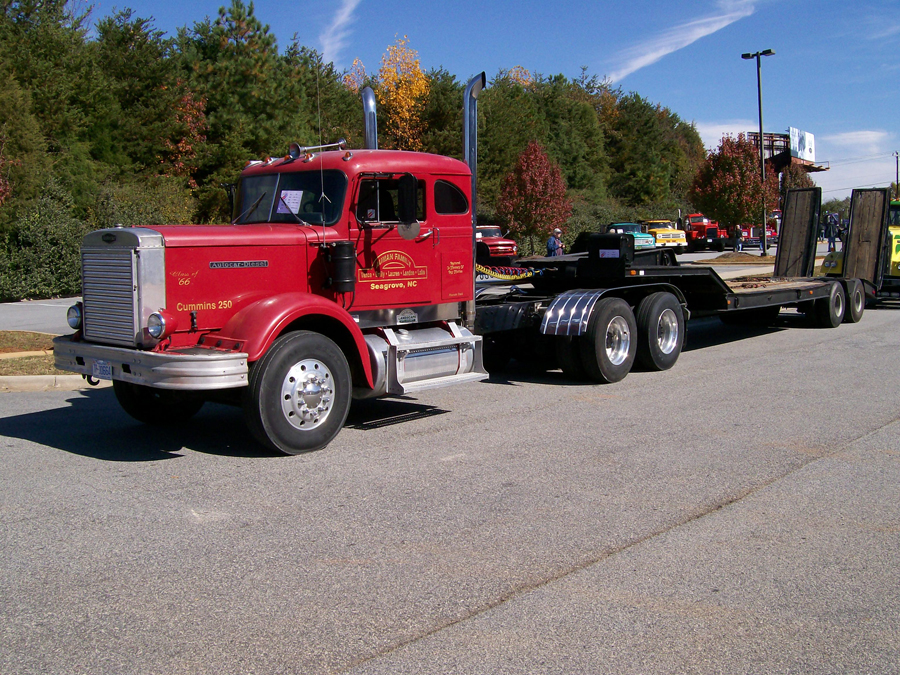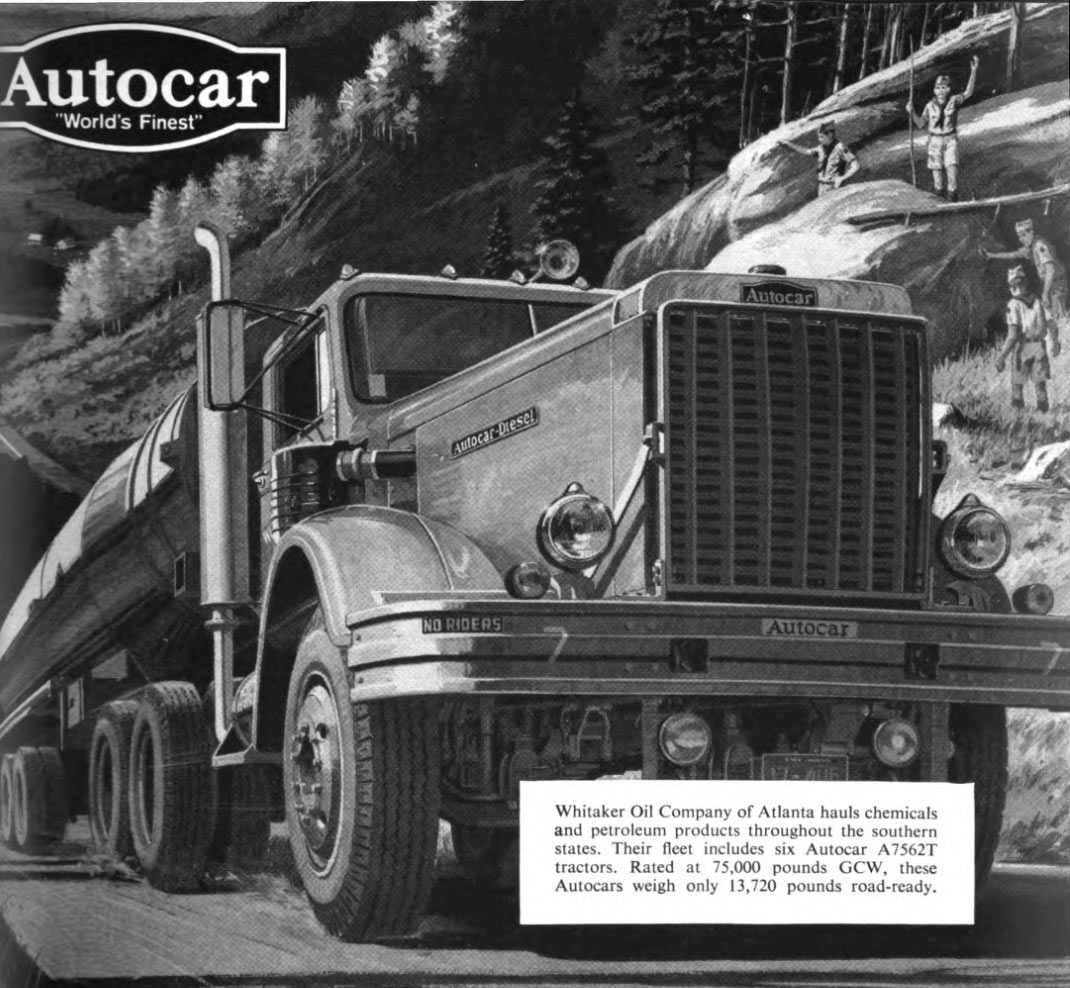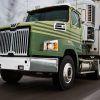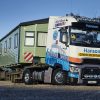Autocar
Commercial
Autocar A series
F-models
In 1958, Autocar announced it new lightweight “A” series trucks, says they save up to 25 per cent, in tractor weight as compared to standard models. They cut as much as 4200 lb in some cases. Full range of tractor and truck models are available in both four and six-wheel versions. Diesel power plants offered range from 180 to 262 hp. For use in states where a “bridge formula” sets the gross weight limit, “axle-forward” types are included as well as “axle-back” models for non-formula states.
Frame side rails are deep section, heat-treated alloy aluminum. Flanges are increased in thickness to provide required frame stiffness in longer wheelbase chassis. All cross members are of fabricated or cast aluminum. On 6×4 models, aluminum channel stress absorber is located at tandem rear axle cross member. On 4 x 2 models, rear spring front and rear brackets are of heat-treated alloy aluminum. They have malleable iron, wear-resistant inserts molded in place.
Radiator assembly is of built-up construction. It has readily-replaceable cast aluminum upper and lower tanks, extruded aluminum side brackets, copper fin and tube radiator. Radiator is free to float independently of frame movement, acts in unit with cab and hood assembly.
Vertical loading is taken on rubber cushion mounting with fore and aft movement controlled by adjustable tie rods. Radiator shutter is also of aluminum construction, and radiator shell and grille have been eliminated. Cab frame is heli-arc welded aluminum alloy, is covered with an aluminum skin. New models have fiber glass fenders.
In 1970 set-forward axle models were renamed: 2-axle truck called A42F, 3-axle truck – A64F. From 1971 these models would be produced with optional fiberglass hood and fenders.
Related models:
Autocar AU-70
Autocar AT64F
Autocar A64B Show Truck
F-models with a fiberglass hood
In 1971, the A series F models got a new fiberglass hood instead of steel bonnet and wings, which could be ordered optionally. The wings were bolted to it, so they could be quickly replaced if damaged. Dual round headlights were integrated in the wings. Designers also improved the frame of the truck, giving it even greater strength.
The lineup still consists of two models: the 2-axle A42F (GCW of 35000 lbs) and 3-axle A64F (GCW of 46000 lbs). Both were equipped with diesel engines with a capacity from 220 to 400 hp. Wheelbase of A42F ranged from 163 to 189 in, and A64F – from 175 to 235 in.
B-models
According to tradition, in addition to models with shifted forward front axle, the new lightweight series “A” included also models with a shifted back front axle (SBA). These versions had been used mainly in states with special restrictions on axle loads. “A” series trucks were equipped with diesel engines rated at 180-262 hp. The basic models were 2-axle A75 and 3-axle A7564. Almost all trucks had been used as a tractor.
In 1970, the model with set back axle got new indexes. 4×2 model became A42B, while 6×4 model called A64B.


